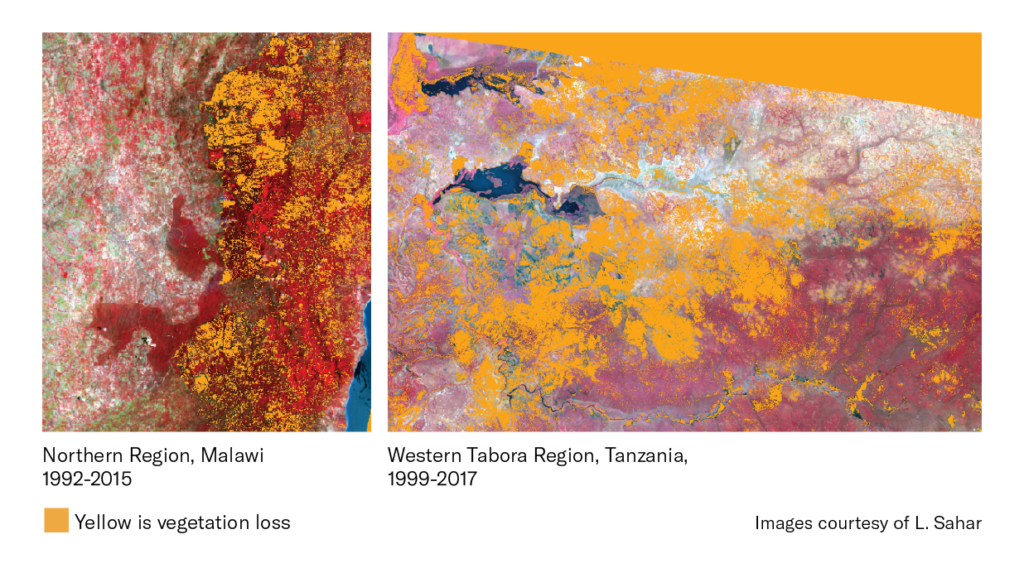References
Overview
World Health Organization. Tobacco and its environmental impact: an overview [Internet]. Geneva: World Health Organization; 2017 [cited 2023 Feb 1]. 72 p. Available from: https://apps.who.int/iris/handle/10665/255574
Life cycle assessment
Zafeiridou M, Hopkinson NS, Voulvoulis N. Cigarette Smoking: An Assessment of Tobacco’s Global Environmental Footprint Across Its Entire Supply Chain. Environ Sci Technol. 2018 Aug 7;52(15):8087–94.
Houghton F, Houghton S, O’Doherty D, McInerney D, Duncan B. Greenwashing tobacco—attempts to eco-label a killer product. J Environ Stud Sci. 2019 Mar;9(1):82–5.
Boettcher R, Zappe AL, Oliveira PF de, Machado ÊL, Lawisch-Rodriguez A de A, Rodriguez-Lopez DA. Carbon Footprint of agricultural production and processing of tobacco (Nicotiana tabacum) in southern Brazil. Environmental Technology & Innovation. 2020 May;18:100625.
Iran — tobacco production & the environment
Mirkarimi SR, Ardakani Z, Rostamian R. Economic and environmental assessment of tobacco production in Northern Iran. Industrial Crops and Products. 2021 Mar;161:113171.
Case study — tobacco and the environment — California
Novotny TE, Bialous SA, Kyra Hill JD, Hamzai L. Tobacco Product Waste in California: A White Paper. https://thirdhandsmoke.org/wp-content/uploads/2023/02/TPW-White-Paper-Toolkit.pdf.
Environmental effects of electronic cigarettes and HTPs
Hendlin YH. Alert: Public Health Implications of Electronic Cigarette Waste. Am J Public Health. 2018 Nov;108(11):1489–90.
Forster M. What happens when you throw away e-cigarettes? [Internet]. 2018. Available from: https://missionlocal.org/2018/11/what-happens-when-you-throw-away-an-e-cigarette/
Green washing
Tobacco Tactics. Greenwashing. Bath: University of Bath. Available at https://tobaccotactics.org/article/greenwashing/. Last accessed 25-Jan-2024.
Disposable electronic cigarettes ban
Scheiby K. 2024. Are disposable vapes bad for the environment? London: GreenPeace. https://www.greenpeace.org.uk/news/are-disposable-vapes-bad-for-the-environment/#:~:text=In%20the%20UK%20we%20bin,rest%20ends%20up%20in%20landfills. Last accessed January 30, 2024.
United Kingdom Government. 2024 (January 28). Disposable vapes banned to protect children’s health. https://www.gov.uk/government/news/disposable-vapes-banned-to-protect-childrens-health. Last accessed January 30, 2024.
Overview
World Health Organization. Tobacco and its environmental impact: an overview [Internet]. Geneva: World Health Organization; 2017 [cited 2023 Feb 1]. 72 p. Available from: https://apps.who.int/iris/handle/10665/255574
Life cycle assessment
Zafeiridou M, Hopkinson NS, Voulvoulis N. Cigarette Smoking: An Assessment of Tobacco’s Global Environmental Footprint Across Its Entire Supply Chain. Environ Sci Technol. 2018 Aug 7;52(15):8087–94.
Houghton F, Houghton S, O’Doherty D, McInerney D, Duncan B. Greenwashing tobacco—attempts to eco-label a killer product. J Environ Stud Sci. 2019 Mar;9(1):82–5.
Boettcher R, Zappe AL, Oliveira PF de, Machado ÊL, Lawisch-Rodriguez A de A, Rodriguez-Lopez DA. Carbon Footprint of agricultural production and processing of tobacco (Nicotiana tabacum) in southern Brazil. Environmental Technology & Innovation. 2020 May;18:100625.
Iran — tobacco production & the environment
Mirkarimi SR, Ardakani Z, Rostamian R. Economic and environmental assessment of tobacco production in Northern Iran. Industrial Crops and Products. 2021 Mar;161:113171.
Case study — tobacco and the environment — California
Novotny TE, Bialous SA, Kyra Hill JD, Hamzai L. Tobacco Product Waste in California: A White Paper. https://thirdhandsmoke.org/wp-content/uploads/2023/02/TPW-White-Paper-Toolkit.pdf.
Environmental effects of electronic cigarettes and HTPs
Hendlin YH. Alert: Public Health Implications of Electronic Cigarette Waste. Am J Public Health. 2018 Nov;108(11):1489–90.
Forster M. What happens when you throw away e-cigarettes? [Internet]. 2018. Available from: https://missionlocal.org/2018/11/what-happens-when-you-throw-away-an-e-cigarette/
Green washing
Tobacco Tactics. Greenwashing. Bath: University of Bath. Available at https://tobaccotactics.org/article/greenwashing/. Last accessed 25-Jan-2024.
Disposable electronic cigarettes ban
Scheiby K. 2024. Are disposable vapes bad for the environment? London: GreenPeace. https://www.greenpeace.org.uk/news/are-disposable-vapes-bad-for-the-environment/#:~:text=In%20the%20UK%20we%20bin,rest%20ends%20up%20in%20landfills. Last accessed January 30, 2024.
United Kingdom Government. 2024 (January 28). Disposable vapes banned to protect children’s health. https://www.gov.uk/government/news/disposable-vapes-banned-to-protect-childrens-health. Last accessed January 30, 2024.

